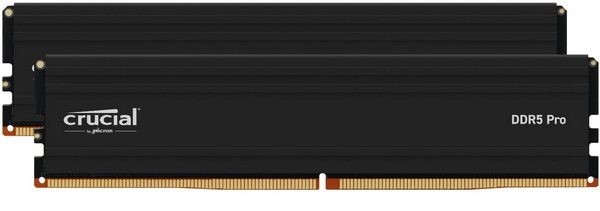INTRODUCTION

DDR5 RAM may not have grown much in terms of speed lately but it has grown in density and even though moving from single 32GB modules to 48GB ones (which effectively means going from 64GB/128GB to 96GB/192GB on dual and quad DIMM motherboards respectively) might not seem like a big deal to most people it's actually something enthusiasts and professionals alike have been waiting for a long time (as they do the single 64GB modules which should be just around the corner at this point). Crucial recently updated their DDR5 Pro line to include a single 96GB capacity kit, the Dual-Channel 5600MHz CL46 model (CP2K48G56C46U5).
We are an industry leader in innovative memory and storage solutions, transforming how the world uses information to enrich life for all. With a relentless focus on our customers, technology leadership and manufacturing and operational excellence, Micron delivers a rich portfolio of high-performance DRAM, NAND and NOR memory and storage products through our Micron® and Crucial® brands. Every day, the innovations that our people create fuel the data economy, enabling advances in artificial intelligence and 5G applications that unleash opportunities — from the data center to the intelligent edge and across the client and mobile user experience. To learn more about Micron Technology, Inc. (Nasdaq: MU), visit micron.com. http://www.micron.com/
The DDR5 Pro line of RAM by Crucial currently includes dual (2x16/24/48GB) channel kits with frequencies going all the way up to 6000MHz (5600/6000MHz), timings as low as CL46 (5600Hz CL46 - 6000MHz CL48) and voltage set at 1.1V for the entire range. These RAM Kits feature single die modules by Micron, are EXPO and XMP 3.0 compatible and just like past lines Crucial covers them with a limited lifetime warranty. Once again at first 5600MHz might look slow compared to what some other DDR5 dual-channel kits are capable of (8000MHz) but considering these are set at just 1.1V they should have quite a bit of overclocking headroom if you're interested in boosting their performance (although let's not forget that it's density you're getting and for demanding users this is what matters most).

 O-Sense
O-Sense







.png)

